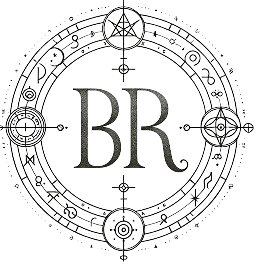
Introduction
Tantra is an ancient Indian spiritual tradition that encompasses philosophical and practical aspects aimed at achieving spiritual enlightenment and harmony. It is often associated with sexual practices, but this is only one of its many facets. Tantra offers a comprehensive understanding of the world and the human being, including physical, emotional, and spiritual dimensions. In this article, we will explore the history of tantra, its key principles and practices, and its relevance for modern individuals.

Historical Roots and Development
Tantra emerged in India over 2000 years ago, with its teachings recorded in ancient texts known as Tantras. These texts contain various methods and rituals for attaining spiritual enlightenment. Tantra has its roots in Vedic culture and yoga, but it also incorporates elements of Buddhism and Jainism.
Tantric traditions are diverse and include numerous schools and branches. The main branches of tantra are:
- Shaiva Tantra: Based on the worship of Shiva, the god of destruction and transformation.
- Shakta Tantra: Focuses on the worship of Shakti, the divine feminine energy.
- Buddhist Tantra: Also known as Vajrayana or the “Diamond Path,” a part of Buddhism that uses tantric practices to achieve enlightenment.
Key Principles of Tantra
Tantra is based on several key principles that define its philosophy and practice:
- Unity of Opposites: Tantra teaches that dualities, such as male and female, light and dark, are part of a unified whole. Accepting and integrating these opposites helps achieve harmony.
- Sacredness of the Body: Tantra views the body as sacred and capable of spiritual transformation. Unlike other spiritual traditions that may neglect bodily aspects, tantra emphasizes the importance of working with the body.
- Kundalini Energy: A central concept in tantra is the kundalini energy, believed to reside at the base of the spine. Awakening and raising this energy through the chakras (energy centers) leads to spiritual enlightenment.
- Rituals and Symbolism: Tantric practices often involve complex rituals and the use of symbols, mantras, and mandalas to concentrate and amplify spiritual energy.
Tantra Practices
Tantra offers a variety of practices aimed at achieving harmony and enlightenment. Some of these include:
Meditation
Meditation in tantra can take various forms, including visualization, concentration on mantras, and work with energy centers. Tantric meditation often focuses on awakening the kundalini and raising it through the chakras.
Yoga
Tantric yoga combines asanas (physical poses), pranayama (breathing techniques), and meditation. These practices help harmonize the body and mind and awaken and direct the kundalini energy.

Rituals and Pujas
Tantra involves numerous rituals and ceremonies known as pujas. These rituals may include offerings to deities, chanting mantras, and using sacred objects and symbols. The goal of such rituals is to create a sacred space and connect with divine energies.
Tantric Sex
One of the most well-known but often misunderstood aspects of tantra is tantric sex. In tantra, sexual energy is seen as a powerful source of spiritual transformation. Tantric sex practices aim to deepen the intimate connection between partners, expand consciousness, and awaken the kundalini. It’s important to understand that these practices require deep respect and awareness, and their main goal is spiritual growth, not physical gratification.
Tantra and Modern Life
In the modern world, tantra attracts attention for its holistic philosophy and practical methods that can be adapted to various aspects of life:
Stress Management and Increased Awareness
Tantric practices such as meditation and yoga help manage stress and increase levels of awareness. A mindful approach to one’s body and energies contributes to improved physical and emotional health.
Enhancing Relationships
The principles of tantra can be applied to enhance personal and intimate relationships. Tantric practices teach respect and deep connection with a partner, which helps strengthen relationships and mutual understanding.
Personal Growth and Spiritual Development
Tantra offers tools for deep self-exploration and spiritual growth. Working with energies and chakras, meditation, and rituals help unlock inner potential and achieve higher states of consciousness.
Conclusion
Tantra is an ancient spiritual tradition that offers a comprehensive understanding of the world and the human being. It combines philosophy and practices aimed at achieving harmony, enlightenment, and deep transformation. In the modern world, tantra can be a powerful tool for improving quality of life, managing stress, and personal growth. It is important to approach tantric practices with respect and awareness, understanding that their true goal is spiritual development and harmony.


